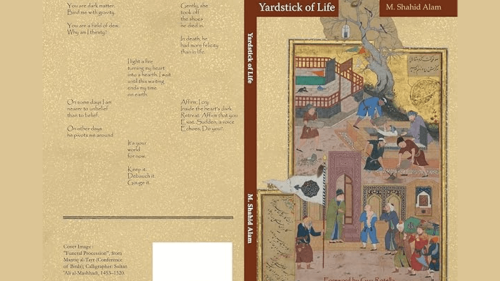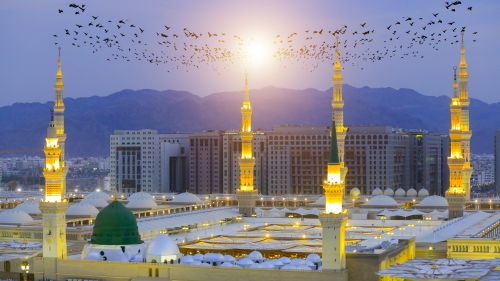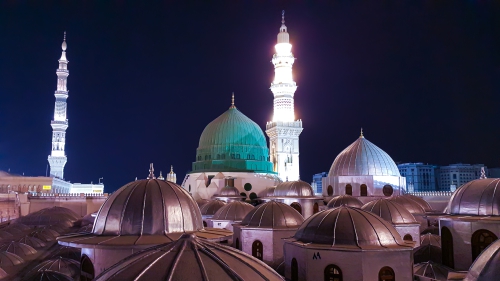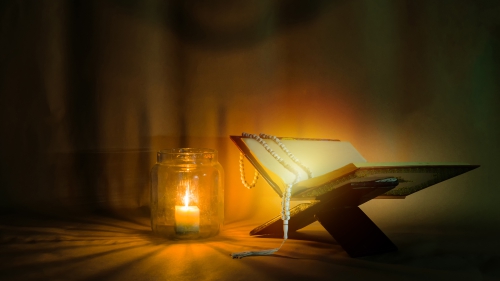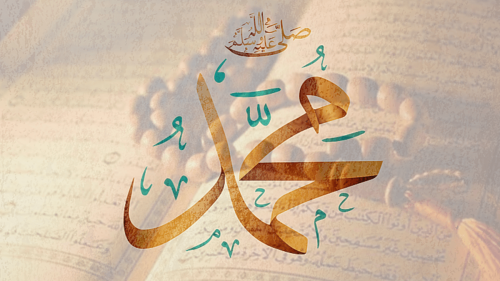The Prophet's Mosque as a Detention and Rehabilitation Centre

Since its inception, the Prophet's mosque in Madinah functioned as a community development center. It performed numerous religious, educational and socio-political roles and functions. It was a centre for religious activities, a learning centre, the seat of the Prophet's government, a welfare and charity centre, a detention and rehabilitation centre, a place for occasional medical treatment and nursing, and a place for some leisure activities.
Concerning the notion of the mosque partly functioning as a detention and rehabilitation center, many aspects of such a role remained shrouded in a number of ambiguities.
Not only were male captives kept in what can be dubbed as the mosque's detention center, but also the female ones. For the latter, an enclosed space near one of the mosque's entrances was designated.
Furthermore, it is reported that a man called Thumama b. Uthal from the Bani Hanifah clan in Najd was captured and fastened to one of the pillars of the mosque. However, the Prophet (pbuh) later ordered some of his people to release him. The man thereupon went to a garden next to the mosque, took a bath and entered the mosque proclaiming shahadah, i.e., he embraced Islam.
The benefits of having a detention center within the mosque's realm were two-fold: it ensured safety and fair treatment of internees -- generally war prisoners; and secondly, it helped them to slowly and via some hands-on experiences come to terms with what Islam and the Muslims were all about and what they really stood for, taking into account the mosque's both spiritual and societal significance. This resulted in many a detainee to be won over by the life and demeanor of the Muslims and to eventually accept Islam.
In other words, the place was not a detention center per se. Rather, it was a spiritual and psychological rehabilitation center never excluded from the ever-increasing scope of da'wah islamiyyah (propagation of and calling the people to Islam). As a matter of fact, every detention center is to function as a rehabilitation center as well. There is no point in sending a person to a detention center as a criminal or an offender, but when he or she comes out, after serving his or her due sentence, the same person comes out still as a criminal and very soon relapses into criminal behavior. A person is to go to a detention center as a criminal or an offender, but when he or she comes out, he or she should come out as a rehabilitated and a normal positive thinking citizen.
When Thumama b. Uthal -- whom we have mentioned earlier -- embraced Islam, having spent a couple of days tied in the mosque as a prisoner, he said to the Prophet (pbuh): "By Allah, there was no face on the earth more hateful to me than your face, but now your face has become to me the dearest of all faces. By Allah, there was no religion more hateful to me than your religion, but now your religion has become the dearest of all religions to me. By Allah, there was no city more hateful to me than your city, but now your city has become the dearest of all cities to me." (Sahih Muslim)
The first in Islam who is believed to have had real detention centers was the fourth caliph, 'Ali b. Abi Talib. As for the three of his predecessors, Abu Bakr, 'Umar and 'Uthman, they followed the custom of the Prophet (pbuh) in making the principal mosque function as a detention center. Of the three, only 'Umar is said to have once bought a house in Makkah to function as a detention center. He bought it from a companion of the Prophet (pbuh), Safwan b. Umayyah, for four thousand dirhams. Even this, however, was nothing new. During the time of the Prophet (pbuh), the house of Ramlah bt. al-Harith al-Najjariyyah, apart from serving as one of the houses in which some of the Prophet's guests or visiting delegations used to be accommodated, once served as an interim detention center too. In it, the members of the Jewish tribe Banu Qurayzah -- around seven hundred in all -- were imprisoned from the moment the judgment that their men were to be slain, property divided, and the women and children made captive, had been passed on them, until the same was executed at least one day later. The Prophet (pbuh) gave Banu Qurayzah this treatment because of their treacherous acts against the Muslims during the petrifying battle of the Ditch (al-khandaq) when the very existence of Islam and the Muslims was put in jeopardy, in spite of all the peace and collaboration treaties that existed between the Muslims and the Jews.
It was due to this particular role played by the Prophet's mosque that the Prophet (pbuh) once wanted to tie a strong demon from the Jinns to one of the mosque pillars, having earlier caught him. A companion Abu Hurayrah narrated that the Prophet (pbuh) said: "A strong demon from the Jinns came to me yesterday suddenly, so as to spoil my prayer, but Allah enabled me to overpower him, and so I caught him and intended to tie him to one of the pillars of the mosque so that all of you might see him, but I remembered the invocation of my brother Sulayman (Solomon): "And grant me a kingdom such as shall not belong to any other after me," (Sad, 35) so I let him go cursed." (Sahih al-Bukhari)
For the same reason, indeed, a companion Abu Lubabah b. 'Abd al-Mundhir tied himself to one of the pillars in the Prophet's mosque, after indicating to the Jewish tribe Banu Qurayzah, which the Prophet (pbuh) and the Muslims had besieged for days for the reasons earlier given, that if they surrendered they would be killed. Abu Lubabah was formerly an ally of the Jews and they consulted him about surrendering. Having hinted at their likely fate, he regretted it very much believing that he had breached the limit and in certain ways betrayed the Muslims. He then tied himself in the mosque and refused to be set free until his repentance was accepted, which eventually came to pass. Abu Lubabah remained at the pillar for some ten or fifteen days. Before every payer, or whenever it was necessary, his daughter would come to untie his bonds. Then after he had prayed, he would ask her to bind him once more. Subsequently, the pillar which Abu Lubabah had tied himself to became known as the Pillar of Repentance (Ustuwan al-Tawbah).
At the time of the Muslim military expedition to Tabuk, there was a group of ten men who together with several other groups failed to march with the army. Each group had its own reasons for the default. The Qur'an says about them: "Others (there are who) have acknowledged their wrong-doings: they have mixed an act that was good with another that was evil. Perhaps Allah will turn unto them (in mercy): for Allah is Oft-forgiving, most Merciful." (al-Tawbah, 102) Pressed by guilt, seven of the ten men tied themselves in the mosque to its pillars until the revelation of the said verse in which they were forgiven. Abu Lubabah b. 'Abd al-Mundhir was one of the ten men and was one of those who tied themselves.
=========
This article is an excerpt from the author's book titled "The Prophet Muhammad (pbuh) and Urbanization of Madinah".
*****
Dr. Spahic Omer, a Bosnian currently residing in Malaysia, is an Associate Professor at the Kulliyyah of Architecture and Environmental Design, International Islamic University Malaysia. He studied in Bosnia, Egypt and Malaysia. His research interests cover Islamic history, culture and civilization, as well as the history and philosophy of the Islamic built environment. He can be reached at spahicoyahoo.com; his blog is at www.medinanet.org .
Topics: Islamic Culture And Civilization, Madinah (Medina), Masjid Al Nabawi
Views: 8397
Related Suggestions






